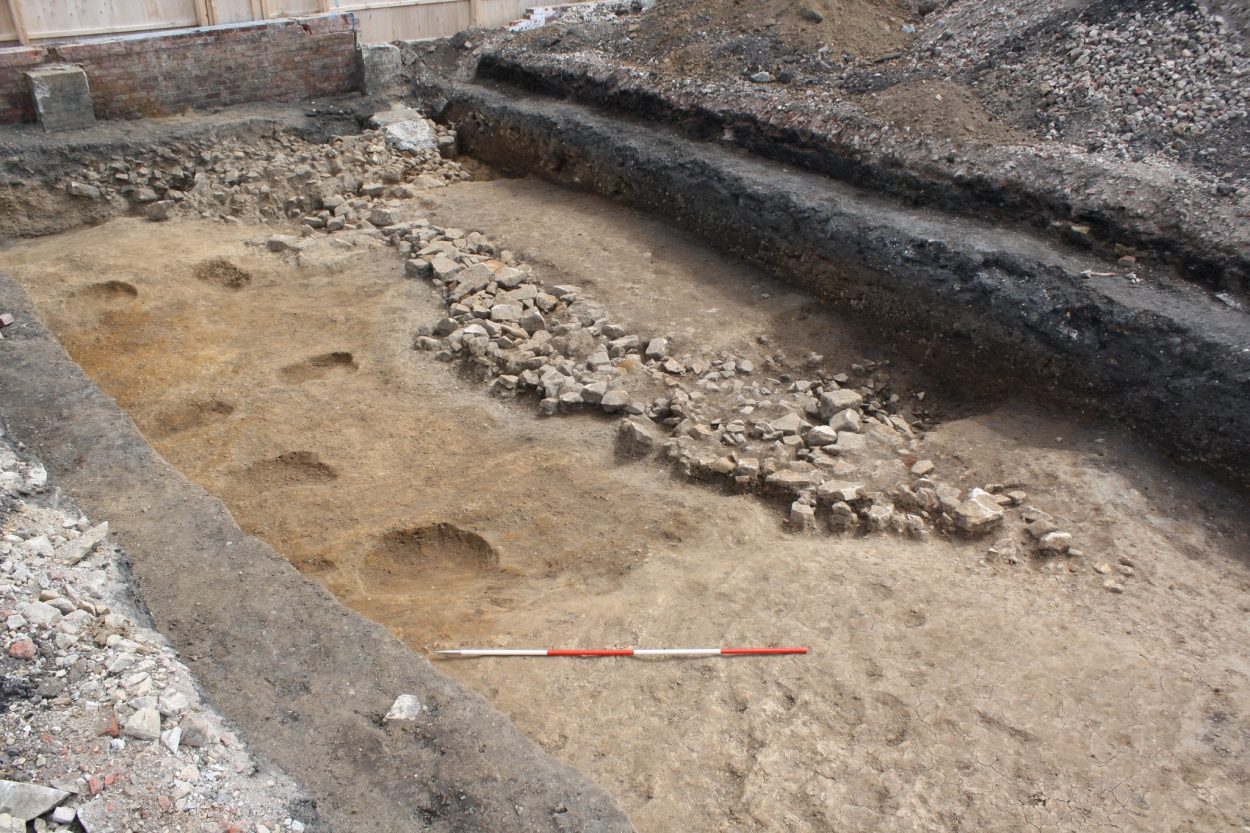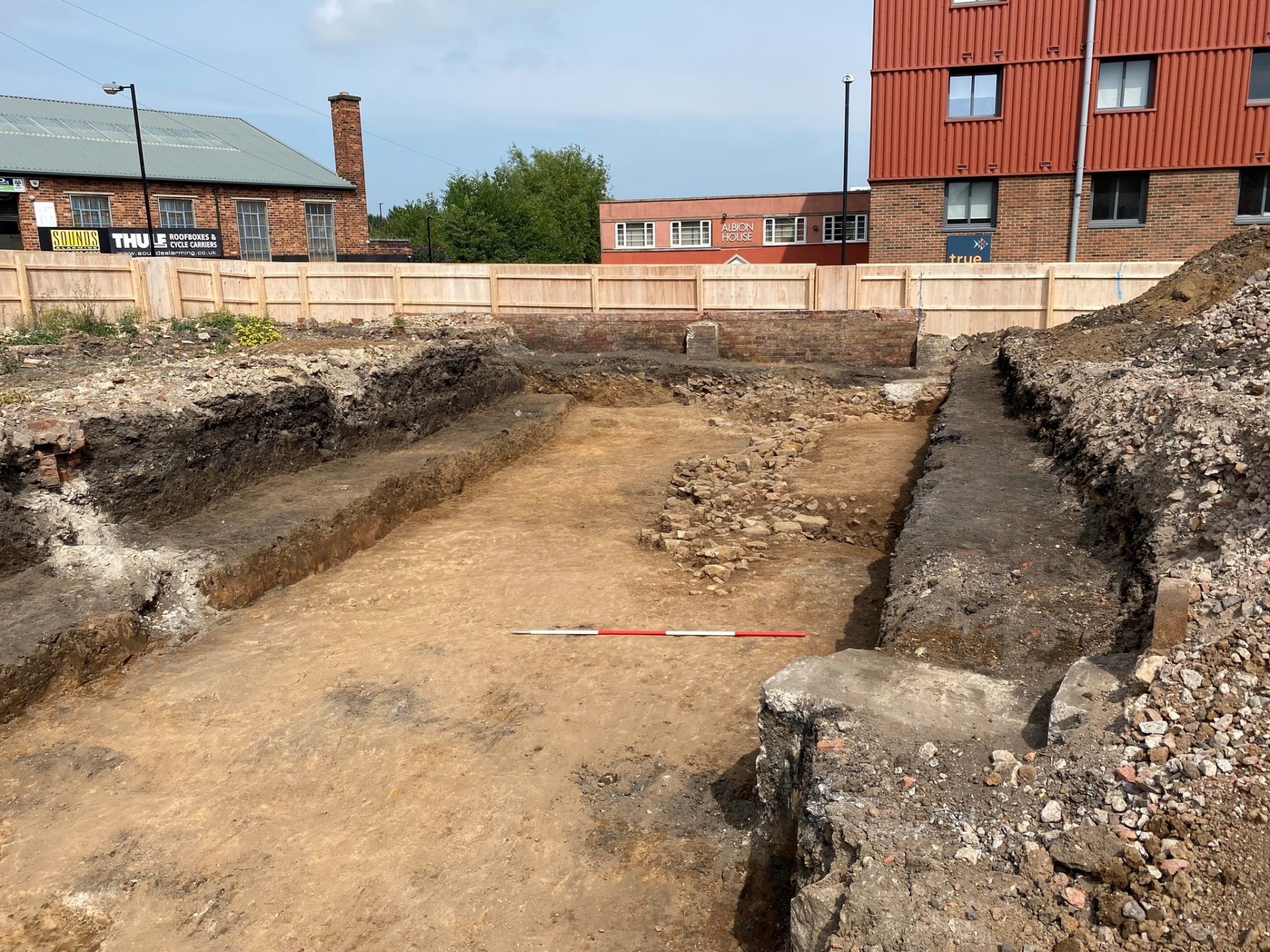Archaeologists from PCA Pre-Construct Archaeology have uncovered the remains of Turret 3a at Hadrian’s Wall during construction works for student accommodation near Newcastle.
Hadrian’s Wall (Vallum Aulium) was a defensive fortification in Roman Britain, running 73 miles (116km) from Mais at the Solway Firth on the Irish Sea to the banks of the River Tyne at Segedunum at Wallsend in the North Sea.
Construction began along the route of the Stanegate Road in AD 122 and was completed in just seven years. 16 Stone Forts were built every five Roman miles (a Roman mile is a thousand paces), and in-between were 80 milecastles, numerous turrets, 6 supply forts, and an earthwork erected south of the wall known as the Vallum.
Archaeologists were excavating in the Ouseburn area, where they have found the only example of a turret east of Newcastle, in addition to evidence of the wall ditch and six berm obstacle pits.

A desk-based assessment was previously conducted to appraise the site by using existing archaeological and historical information to determine any potential archaeological heritage assets and their impact.
This had shown that the excavation area was located along the line of Hadrian’s Wall and the defensive ditch, however, an archaeological evaluation in 2015 had found sandstone rubble, suggesting that any building material was robbed out, leaving only disturbed remains of the rubble core of the wall.
Turret 3a is located at the northeast end of the excavation area and the north wall of the turret/curtain wall of Hadrian’s Wall. It has a length of around 12 metres, with foundations between 2.36 metres to 2.46 metres in width.
The interior appears to have been truncated by levelling or construction activity during the late 19th to early 20th century, however, the team did unearth a fragment of Roman tegula which would suggest that the turret roof was covered with tiles.
The six pits are located within the berm, the area between the wall and the ditch that was sometimes occupied by patterns of pits, each presumably holding timber uprights. The pits are too shallow and small to have functioned as open pits, so they are most likely to have been “cippi” pits referred to by Caesar that held sharpened wooden entanglements.
Header Image : Turret 3a – Image Credit : PCA Pre-Construct Archaeology





